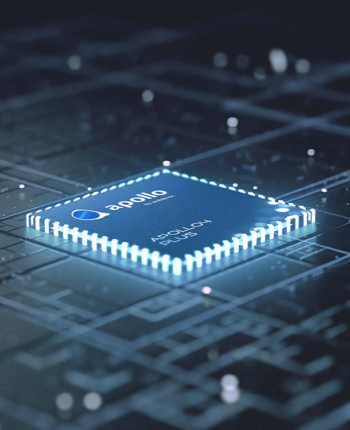About Ambiq apollo 4
About Ambiq apollo 4
Blog Article

SWO interfaces are not generally utilized by output applications, so power-optimizing SWO is principally in order that any power measurements taken throughout development are nearer to those with the deployed procedure.
more Prompt: A cat waking up its sleeping operator demanding breakfast. The operator attempts to disregard the cat, but the cat attempts new practices And eventually the operator pulls out a solution stash of treats from beneath the pillow to hold the cat off just a little for a longer time.
Info Ingestion Libraries: successful seize facts from Ambiq's peripherals and interfaces, and lower buffer copies by using neuralSPOT's aspect extraction libraries.
You’ll come across libraries for speaking with sensors, running SoC peripherals, and controlling power and memory configurations, coupled with tools for very easily debugging your model from your notebook or Laptop, and examples that tie everything collectively.
The chicken’s head is tilted somewhat towards the side, supplying the effect of it wanting regal and majestic. The qualifications is blurred, drawing focus towards the bird’s putting visual appearance.
Ashish is actually a techology consultant with thirteen+ yrs of practical experience and focuses primarily on Facts Science, the Python ecosystem and Django, DevOps and automation. He makes a speciality of the design and supply of essential, impactful packages.
Generally, The ultimate way to ramp up on a new program library is thru an extensive example - That is why neuralSPOT involves basic_tf_stub, an illustrative example that illustrates a lot of neuralSPOT's features.
SleepKit features several built-in duties. Each activity presents reference routines for instruction, analyzing, and exporting the model. The routines could be tailored by supplying a configuration file or by placing the parameters instantly inside the code.
AI model development follows a lifecycle - very first, the info that may be utilized to educate the model has to be gathered and ready.
Considering the fact that trained models are a minimum of partially derived from your dataset, these limitations use to them.
On top of that, by leveraging hugely-customizable configurations, SleepKit can be utilized to create tailor made workflows for the offered software with nominal coding. Refer to the Quickstart to promptly rise up and running in minutes.
We’re really enthusiastic about generative models at OpenAI, and possess just produced four projects that advance the condition on the artwork. For every of such contributions we are also releasing a technical report and source code.
This part performs a key position in enabling artificial intelligence to imitate human believed and complete responsibilities like image recognition, language translation, and information Investigation.
This incredible amount of data is on the market and to a considerable extent very easily obtainable—both within the Actual physical planet of atoms or maybe the digital world of bits. The one tricky aspect is always to create models and algorithms that may assess and have an understanding of this treasure trove of knowledge.
Accelerating the Development of Optimized AI Features with Ambiq’s neuralSPOT
Ambiq’s neuralSPOT® is an open-source AI developer-focused SDK designed for our latest Apollo4 Plus system-on-chip (SoC) family. neuralSPOT provides an on-ramp to the rapid development of AI features for our customers’ AI applications and products. Included with neuralSPOT are Ambiq-optimized libraries, tools, and examples to help jumpstart AI-focused applications.
UNDERSTANDING NEURALSPOT VIA THE BASIC TENSORFLOW EXAMPLE
Often, the best way to ramp up on Blue lite a new software library is through a comprehensive example – this is why neuralSPOt includes basic_tf_stub, an illustrative example that leverages many of neuralSPOT’s features.
In this article, we walk through the example block-by-block, using it as a guide to building AI features using neuralSPOT.
Ambiq's Vice President of Artificial Intelligence, Carlos Morales, went on CNBC Street Signs Asia to discuss the power consumption of AI and trends in endpoint devices.
Since 2010, Ambiq has been a leader in ultra-low power semiconductors that enable endpoint devices with more data-driven and AI-capable features while dropping the energy requirements up to 10X lower. They do this with the patented Subthreshold Power Optimized Technology (SPOT ®) platform.
Computer inferencing is complex, and for endpoint AI to become practical, these devices have to drop from megawatts of power to microwatts. This is where Ambiq has the power to change industries such as healthcare, agriculture, and Industrial IoT.
Ambiq Designs Low-Power for Next Gen Endpoint Devices
Ambiq’s VP of Architecture and Product Planning, Dan Cermak, joins the ipXchange team at CES to discuss how manufacturers can improve their products with ultra-low power. As technology becomes more sophisticated, energy consumption continues to grow. Here Dan outlines how Ambiq stays ahead of the curve by planning for energy requirements 5 years in advance.
Ambiq’s VP of Architecture and Product Planning at Embedded World 2024
Ambiq specializes in ultra-low-power SoC's designed to make intelligent battery-powered endpoint solutions a reality. These days, just about every endpoint device incorporates AI features, including anomaly detection, speech-driven user interfaces, audio event detection and classification, and health monitoring.
Ambiq's ultra low power, high-performance platforms are ideal for implementing this class of AI features, and we at Ambiq are dedicated to making implementation as easy as possible by offering open-source developer-centric toolkits, software libraries, and reference models to accelerate AI feature development.
NEURALSPOT - BECAUSE AI IS HARD ENOUGH
neuralSPOT is an AI developer-focused SDK in the true sense of the word: it includes everything you need to get your AI model onto Ambiq’s platform. You’ll find libraries for talking to sensors, managing SoC peripherals, and controlling power and memory configurations, along with tools for easily debugging your model from your laptop or PC, and examples that tie it all together.
Facebook | Linkedin | Twitter | YouTube